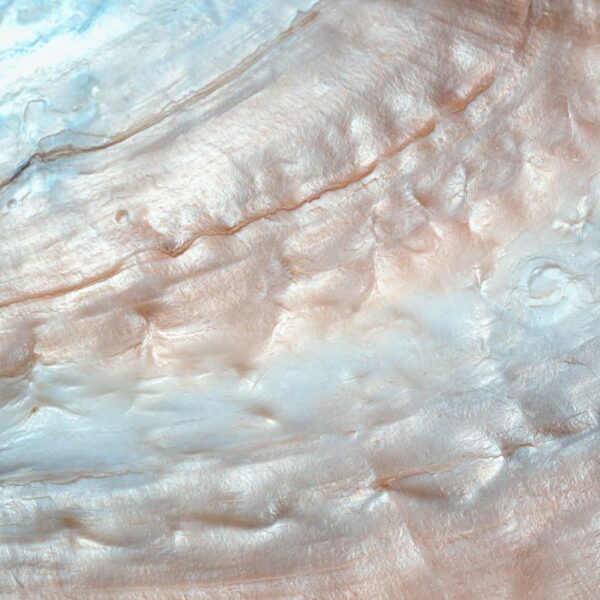Historically referred to as earth wax, Ozokerite is a chemically neutralized hydrocarbon wax (petroleum) with admixtures of isoparaffins and aromatics derived from coal and shale. Highly-refined ozokerite is used in cosmetics and personal care products, including binding, stabilizing, and controlling viscosity.
What is Ozokerite?
Chemically, ozokerite consists of a mixture of various hydrocarbons containing 85-87% by weight of carbon and 14-13% of hydrogen. Crude ozokerite is black. After refining, its color ranges from yellow to white. The wax hardens as it ages, with hardness level depending on its source and refinement.
The commercial grades of ozokerite are:
1. Unbleached (black)
2. Single-bleached (yellow)
3. Double-bleached (white)
Ozokerite has excellent absorbing power for oil, grease, and certain solvents. In this respect, it is superior to paraffin wax, which tends to crystallize from the mixture and allows the fluid components present in its composition to sweat out. Ozokerite is waterproof as well as alkali- and acid-resistant. Only fuming sulfuric and concentrated nitric acids break it down.
In many respects, ozokerite is superior to paraffin wax for personal care products. It’s not susceptible to becoming brittle in low temperatures like paraffin wax. It’s not as slippery as paraffin wax and has a slight tackiness. However, ozokerite is less resistant to actinic rays than paraffin wax, and it sets more rapidly and shrinks more than beeswax. To offset these drawbacks, Venice turpentine or another plasticizer is often added.
Source: Wikipedia
How is Ozokerite Produced?
Ozokerite is an amorphous hydrocarbon wax that occurs naturally in the earth, primarily consisting of saturated straight-chain hydrocarbons. It occurs in Miocene formations near petroleum deposits. It can be found in Poland, Austria, Russia, Utah, and Texas, among other locations.
Ozokerite is chemically treated to remove acidic materials and form petroleum wax. It first separates from earthy matter by melting in boiling water and then drawing off the upper wax layer. The crude wax is then purified with sulfuric acid and bleaching earth to obtain lighter-colored products.
Use of Ozokerite in Cosmetics and Personal Care Products
Mineral waxes like ozokerite have film-forming and hydrophobic (water-repellent) properties in cosmetic products. They contribute shine, protect the skin against moisture loss, and serve as consistency enhancers. Waxes used in cosmetics are highly purified not to cause skin irritation.
Applications in Cosmetics and Personal Care
| Function | Applications |
| Binding | Ozokerite ensures the cohesion of powdered products. It holds together the ingredients of compressed cake products, such as eye shadows and pressed powders. |
| Emulsion Stabilizing | Ozokerite helps to thicken the lipid (oil) portion of cosmetics products and keeps the emulsion from separating into their oil and liquid components. It supports emulsion formation and improves product stability. |
| Opacifying | Ozokerite reduces transparency and translucency by clouding the product. |
| Viscosity Controlling | Ozokerite increases or decreases the viscosity of cosmetic products. |
| Structurant | Ozokerite helps to reduce the brittleness of the stick applications and adds strength and stability to products like lipsticks. |
Products Examples
| Color Cosmetics | Lipstick, Lip Balm, Eye Shadow, Compact Powder, Concealer |
| Antiperspirant/Deodorant | Deodorant Sticks |
| Skincare | Creams and Lotions |
Properties of Ozokerite
| Physical Form | Pastille |
| Color | White, yellow, green, black |
| Odor | Odorless |
| Shelf Life | 2 years |
| Melting Point | 58 to 100°C |
| Acid Value, mgr. KOH/gr | 0 |
| Saponification Value mgr. KOH/gr | 0 |
| Iodine Value | 7.8-9.2 |
| Refractive Index (60ºC) | 1.440 |
| Dielectric Constant | 2.37-2.55 |
| Specific Gravity | 0.85 to 0.95 |
| Solubility | Soluble in ether, petroleum, benzene, turpentine, chloroform, and carbon disulfide. Insoluble in water. |
| Compatibility | Compatible with all kinds of mineral and plant oils and waxes. |
Typical Formulations
DR1-39: NuLastic Slip Skin Conditioning Lipstick with Allantoin
Here is an example of a skin conditioning product table with ozokerite along with the % weight of ingredients:
| PHASE | INCI Name | TRADE Name | Supplier | % Wt. |
| A (Oil) | Polyglyceryl 2-Diisostearate | Dermol DGDIS | Alzo International | 9 |
| Castor Oil/IPDI Copolymer | Polyderm PPI-CO | Alzo International | 5 | |
| Polyethylene | Performalene 400 | New Phase Technologies | 6 | |
| C20-40 Alcohols | Performacol 350 | New Phase Technologies | 8 | |
| Microcrystalline Wax | SP89 | Strahl and Pitsch | 20 | |
| Ozokerite Wax | SP1026 | Strahl and Pitsch | 2 | |
| Isononyl Isononanoate (and) PEG-10 Dimethicone/Vinyl Dimethicne Crosspolymer | NuLastic Slip D99 9 | Alzo International | 35 | |
| B (Aqueous) | Water | Water | – | 6.5 |
| Glycerin | Glycerin | Alzo | 10 | |
| Allantoin | Allantoin | DSM | 0.5 | |
| Polysorbate 60 | Tween 60 | Croda | 3 | |
| Caprylyl Glycol | Dermol CG | Alzo International | 0.5 | |
| Phenoxyethanol | Phenoxetol | Clariant | 0.5 | |
| C (Pigment) | Iron Oxide | Unipure Red LC 381 Aq | Sensient | 4 |
| Iron Oxide | Unipure White 981 Aq | Sensient | 3 | |
| Iron Oxide | Unipure Yellow 182 Aq | Sensient | 1 | |
| Mica (and) Titanium Dioxide (and) Iron Oxides | Cloissonne Sparkle Gold | BASF | 1.67 | |
| Mica (and) Titanium Dioxide (and) Iron Oxides | Flamenco Twilight Red 430ZB | BASF | 1 | |
| Mica (and) Titanium Dioxide | Kobo KTZ Classic White | Kobo | 1.33 | |
| Total | 100.00 |
Source: Knowde
Formulation Procedure
- Melt Phase A without Nulastic and mix.
- Add Nulastic to Phase A and mix until homogeneous.
- Add Phase B into Phase A and mix well using silverson homogenizer.
- Mix in Phase C until the color is completely dispersed. Continue mixing using homogenizer.
- Once at a constant temperature of 85°C, pour into lipstick mold.
Ozokerite Formulation Considerations
- Ozokerite is compatible with mineral and plant oils and other waxes. While formulating anhydrous bases for products such as lipstick, deodorants, shampoo bars, and solid lotions, combining these waxes and oils for additional properties, such as enhanced slip and pigment payoff is always preferred.
- Ozokerite is incompatible with strong oxidizing agents, and it is not recommended to be used in products like hair bleach, hair color, and hair straightening products.
Safety & Regulatory Considerations
Based on the documented animal and clinical test data, the Cosmetic Ingredient Review (CIR) concluded that ozokerite waxes are safe for use as cosmetic ingredients in the present practices of concentration and use.
Health Effects of Ozokerite
- Ozokerite is generally well-tolerated by the skin and is not a common allergen or irritant. However, if you’re using a deodorant with ozokerite and are experiencing underarm irritation, it may be a contributing factor. Skin-to-skin friction is the top cause of underarm rashes (intertrigo), and ozokerite’s waxy nature could increase that friction, especially if the formula feels tacky, gritty, or sticky.
- Ozokerite wax is also non-comedogenic and does not clog pores or cause acne.
Safety & Toxicity of Ozokerite
- According to the combined chronic toxicity and carcinogenicity studies of ozokerite, long-term exposure causes systemic chronic inflammation due to a foreign body response. Ozokerite is considered weakly carcinogenic in the liver of male F344 rats.
- Ozokerite is a potential environmental pollutant and can be contaminated with polyaromatic hydrocarbons.
Identification Numbers
| Chemical Name | Ozokerite Wax |
| CAS Number | 64742-33-2 |
| EC Number | 265-134-6 |
| COSING Ref. No | 78292 |
Fun Facts About Ozokerite
- Most of the ozokerite used for commercial purposes is mined in Eastern Europe.
- Because it lacks a definite composition and crystalline structure, ozokerite is not considered a mineral but only a mineraloid.
- Upon distillation in a current of superheated steam, ozokerite yields a candle-making material resembling the paraffin obtained from petroleum and shale oil but with a higher melting point. For this reason, it is commonly used for candle-making in hot climates.
- Refined ozokerite or ceresin, which usually has a melting point of 61° to 78°C, is largely used as an adulterant of beeswax and is frequently colored artificially to resemble beeswax in appearance.




